In homes across the country, a quiet revolution is taking place overhead. The once-ubiquitous flat, white ceiling is being dramatically reimagined with the addition of faux wood beams.
Once a feature reserved for historic farmhouses or rustic lodges, these decorative elements have broken free from their traditional confines, becoming a surprisingly versatile tool in the modern designer’s kit.
But why the surge in popularity for beams that don’t hold up the roof? The answer lies in a powerful combination of aesthetics, accessibility, and sheer design impact.
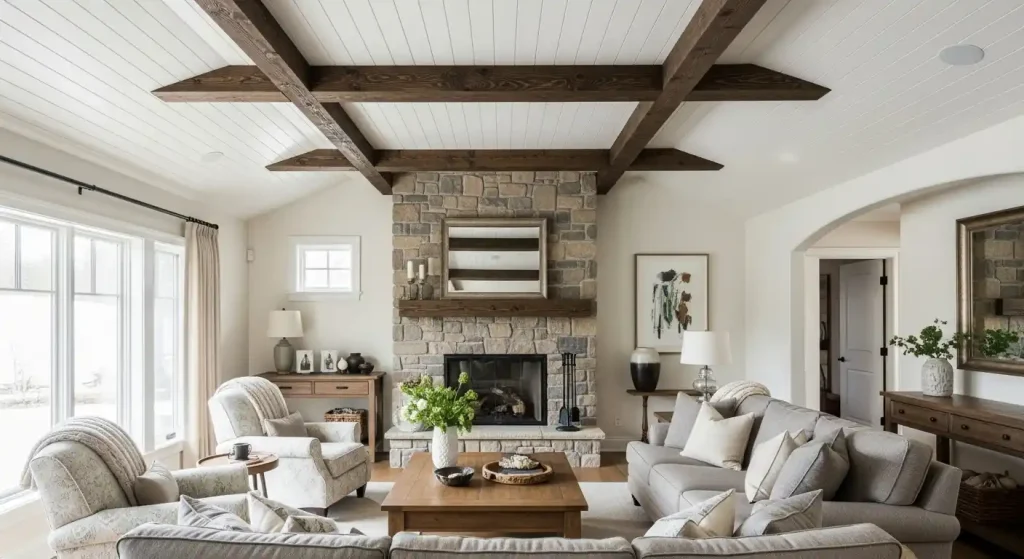
More Than Meets the Eye: The Allure of Faux Beams
The primary appeal of fake beams is their transformative power. They instantly add architectural interest, depth, and character to a room that might otherwise feel bland or boxy. Here’s what they bring to the table:
- Instant Character and Warmth: In new-build homes that often lack architectural detail, faux beams provide a sense of history and craftsmanship. The rich texture of wood, even simulated, introduces a natural, organic element that makes a space feel more inviting and established.
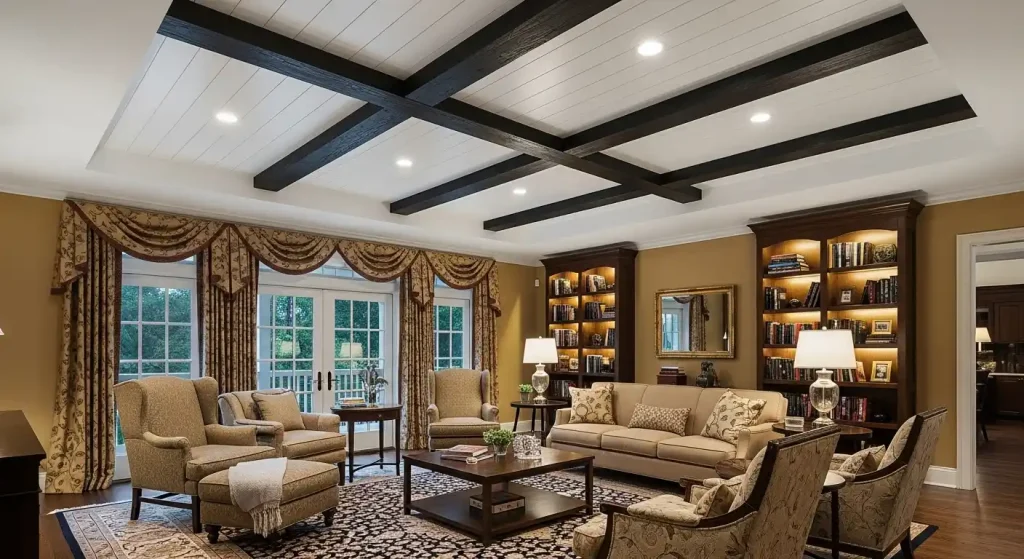
- Defined Space: Beams are exceptional for defining areas in open-plan living. Running beams across a great room can subtly separate the kitchen from the dining area without the need for walls, guiding the eye and creating a more cohesive flow.
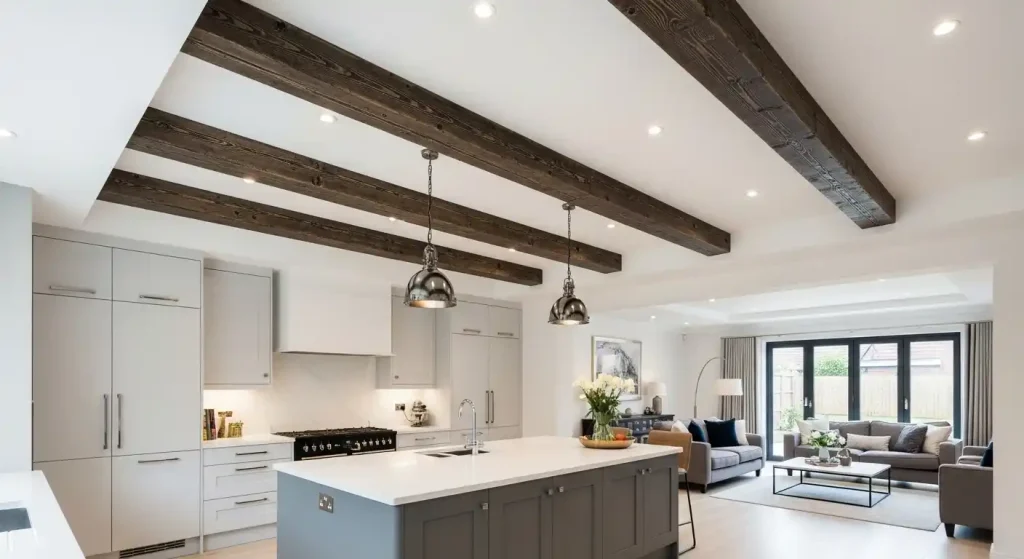
- Visual Height and Dimension: Contrary to intuition, strategically placed beams can actually make a ceiling feel higher. By drawing the eye upward and creating lines that elongate the space, they add a sense of volume. Conversely, they can also be used to make an overly large, cavernous room feel more intimate and grounded.
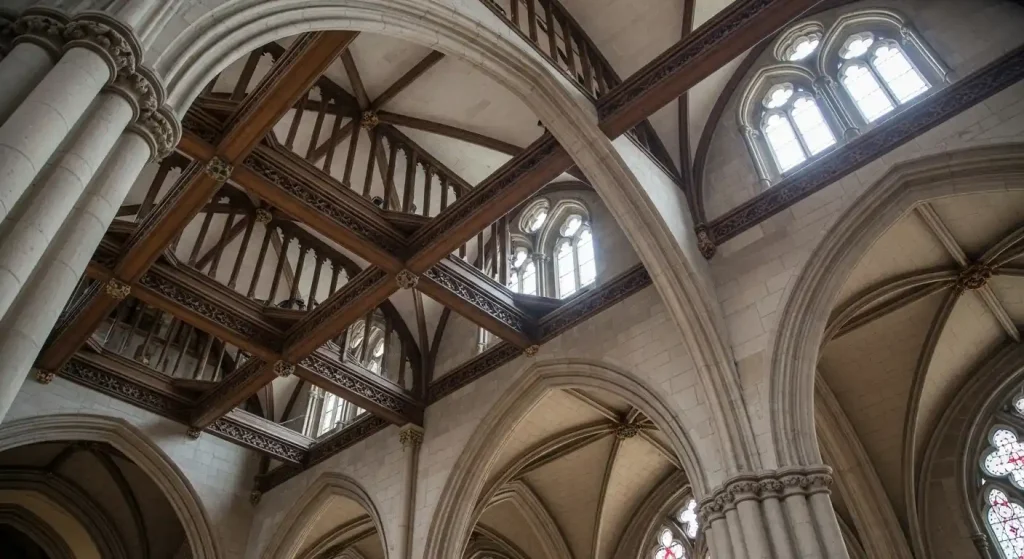
- Style Versatility: While the first image might be a rustic, reclaimed wood beam, the style spectrum is vast.
- Rustic/ Farmhouse: Distressed, hand-hewn, or reclaimed-style beams.
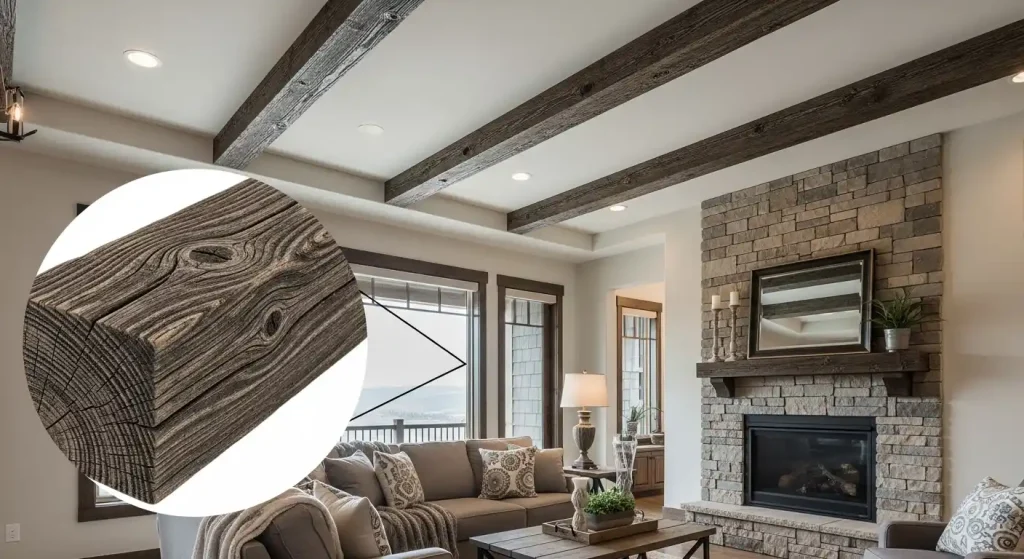
- Modern: Sleek, smooth-finished beams in dark walnut or even painted black or white.
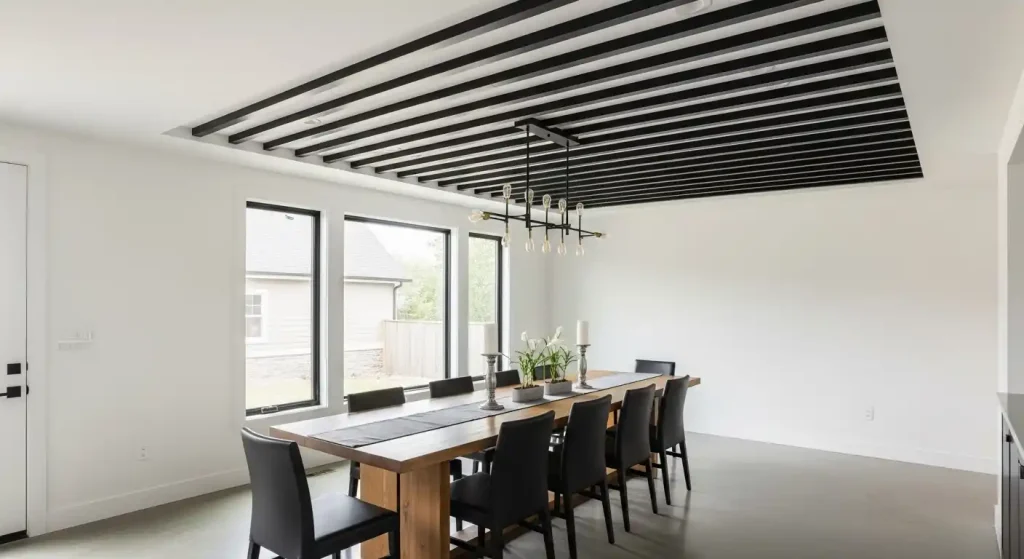
- Coastal: White-washed or light oak-style beams.
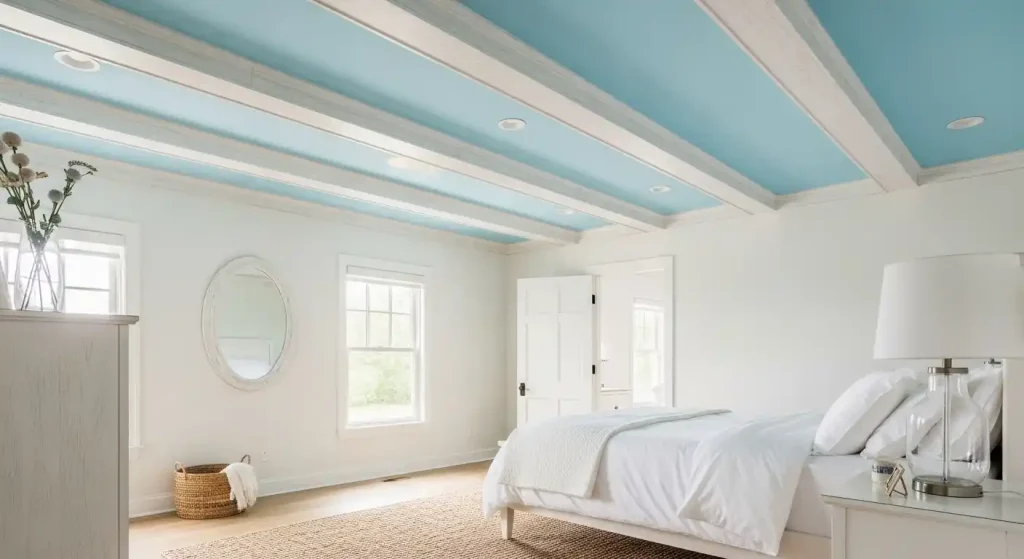
The Practical Perks: Why Fake Often Makes Sense
Beyond beauty, the decision to choose faux over real solid wood beams is often a practical one.
- Weight and Installation: Authentic solid timber beams are incredibly heavy, often requiring structural reinforcement and a team of professionals to install. Faux beams, typically made from high-density polyurethane or lightweight hollow wood, are feather-light. They can often be installed by a confident DIYer in a weekend using basic tools, sliding over a simple wooden cleat attached to the ceiling.
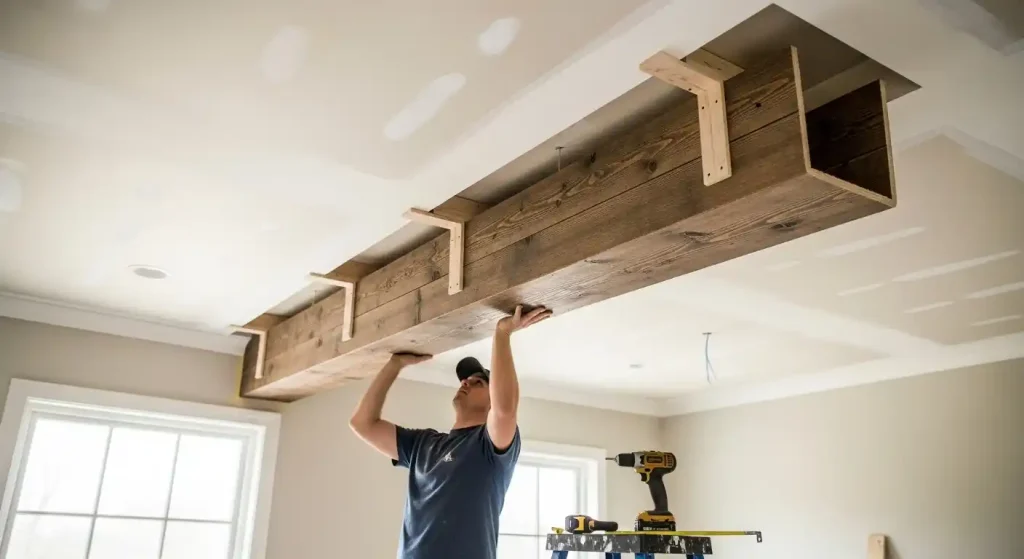
- Cost-Effectiveness: The price difference is significant. Authentic wood beams, especially reclaimed ones, can be prohibitively expensive. Faux beams offer the same dramatic look for a fraction of the cost, making high-impact design accessible to more homeowners.
- Consistency and Durability: Unlike real wood, high-quality polyurethane beams won’t warp, crack, or splinter. They are also immune to pest infestations like termites. For those seeking a specific, uniform look, faux beams provide consistency that can be hard to find in natural timber.
- Finish Options: The market for faux beams is incredibly sophisticated. Many are molded from real wood, capturing every grain, knot, and imperfection. They come pre-finished in a huge array of stains and paints, saving time and effort.
Considerations Before You Commit
While the benefits are compelling, faux beams aren’t a one-size-fits-all solution.
- The Authenticity Debate: Purists will always argue that nothing beats the real thing. The unique variations, density, and history of a solid wood beam have a value that synthetic materials can’t replicate.
- Material Quality: Not all faux beams are created equal. Cheaper options can look obviously plastic and feel flimsy. Investing in higher-quality polyurethane or hollow wood composites is key to achieving a believable, high-end look.
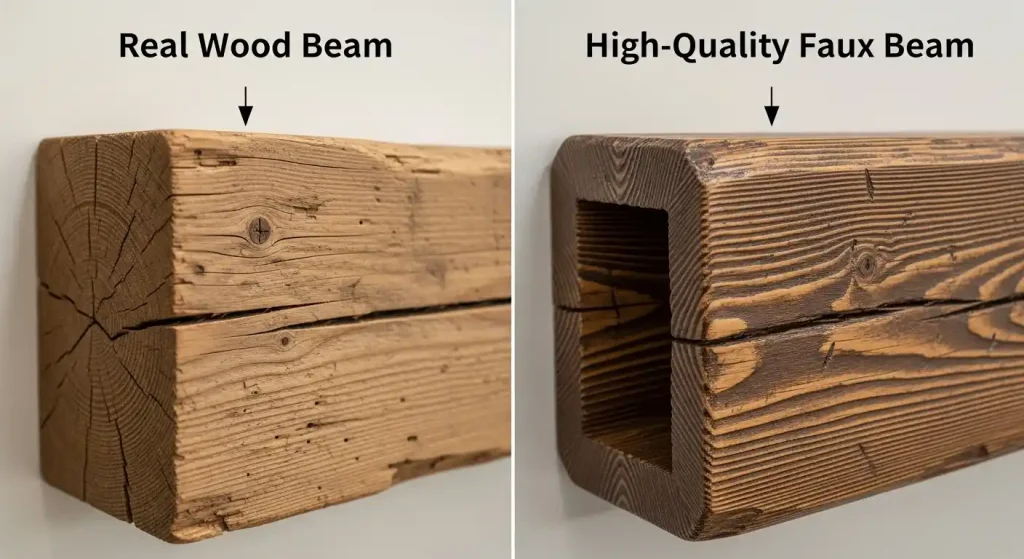
- Proportional Placement: The scale and placement of beams are critical. Beams that are too small for a large room can look like an afterthought, while beams that are too large can feel oppressive. Proper spacing is essential to avoid a cluttered or overly busy ceiling.

The Final Verdict
Fake beams on the ceiling are more than just a passing trend; they are a powerful design shortcut. They offer the character and charm of traditional architecture without the structural demands, heavy cost, or complex installation. For anyone looking to add instant personality, warmth, and architectural depth to their home, looking up and considering a faux beam might just be the most impactful design decision they make.
In the world of interior design, it’s proof positive that sometimes, the smartest choice is the one that’s cleverly faking it.




